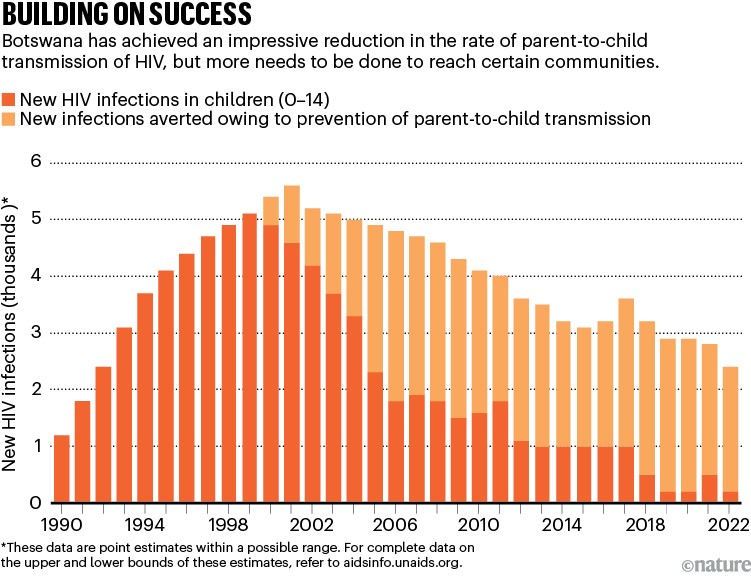This is how the world finally ends the HIV/AIDS pandemic
This is how the world finally ends the HIV/AIDS pandemic Nature.com


Sustainable Development Goals (SDGs) and the Fight Against HIV/AIDS
Introduction
Nearly 30 years ago — more than a decade after HIV/AIDS was first identified — a group of scientists in the United States and France reported impressive results from a clinical trial. Pregnant women living with HIV could reduce the risk of transmitting the virus to their newborn child by around 67% if they took a drug called zidovudine during pregnancy and their infant took it for the first six weeks of life1. This breakthrough discovery paved the way for significant progress in eliminating parent-to-child transmission of HIV and expanding access to life-saving treatments for individuals living with HIV.
Progress and Achievements
Since these landmark studies, 5.5 million children of mothers living with HIV have been born free of the disease. This remarkable achievement is largely attributed to the US President’s Emergency Plan for AIDS Relief (PEPFAR), a program created by former US president George W. Bush. PEPFAR has provided crucial access to life-saving treatment for over 20 million people in at least 50 countries2.
The 95-95-95 Targets
The United Nations Programme on HIV/AIDS (UNAIDS) has set ambitious targets known as the ’95-95-95′ targets to end the HIV/AIDS pandemic by 2030. These targets include ensuring that at least 95% of people living with HIV know their status, at least 95% of those people are on life-saving antiretroviral therapy, and at least 95% of those people have an undetectable viral load3.
Supporting Countries to Achieve the Goals
To achieve these goals, it is essential to empower health ministries, clinicians, community health workers, and HIV activists to design programs that prioritize individual needs. While system-level changes such as drug procurement and clinic provision are critical, behavioral science approaches can play a significant role in reaching populations most in need. Placing people at the core of the response is key to finally ending the HIV/AIDS pandemic.
Building on Success: The Case of Botswana
Botswana serves as an important model for other countries in the fight against HIV/AIDS. In 2008, 1 in 3 pregnant women aged 15–49 in Botswana were living with HIV. By 2022, prevalence among women aged 15–49 had dropped to around 24%. This achievement is largely attributed to the partnership between the Botswana government, PEPFAR, and other organizations, including civil society and faith-based groups. In 2021, Botswana became the first high-burden country to be on track to eliminate new HIV infections among children4.
Source: UNAIDS

Reaching Those Most Affected
As HIV/AIDS becomes less common globally, it becomes increasingly challenging to reach individuals and communities most affected by the disease. Testing plays a crucial role in linking people to treatment and raising awareness about available preventive measures. However, many barriers, including stigma, discrimination, and logistical challenges, prevent people from getting tested and receiving timely treatment. Efforts must be made to empower and support these individuals to access the care they need.
No Community Left Behind
Efforts to achieve the 95-95-95 targets should prioritize young people, especially girls and women aged 15–24 and men aged 25–35. These groups account for a significant proportion of new HIV infections globally. However, testing rates among young people in regions severely affected by HIV/AIDS remain low. Prevention strategies such as pre-exposure prophylaxis therapy (PrEP) should also be prioritized for key populations, including sex workers and members of the LGBT+ community. Tailoring interventions to the specific needs of these groups is crucial for success.

Join us, as fellow seekers of change, on a transformative journey at https://sdgtalks.ai/welcome, where you can become a member and actively contribute to shaping a brighter future.







